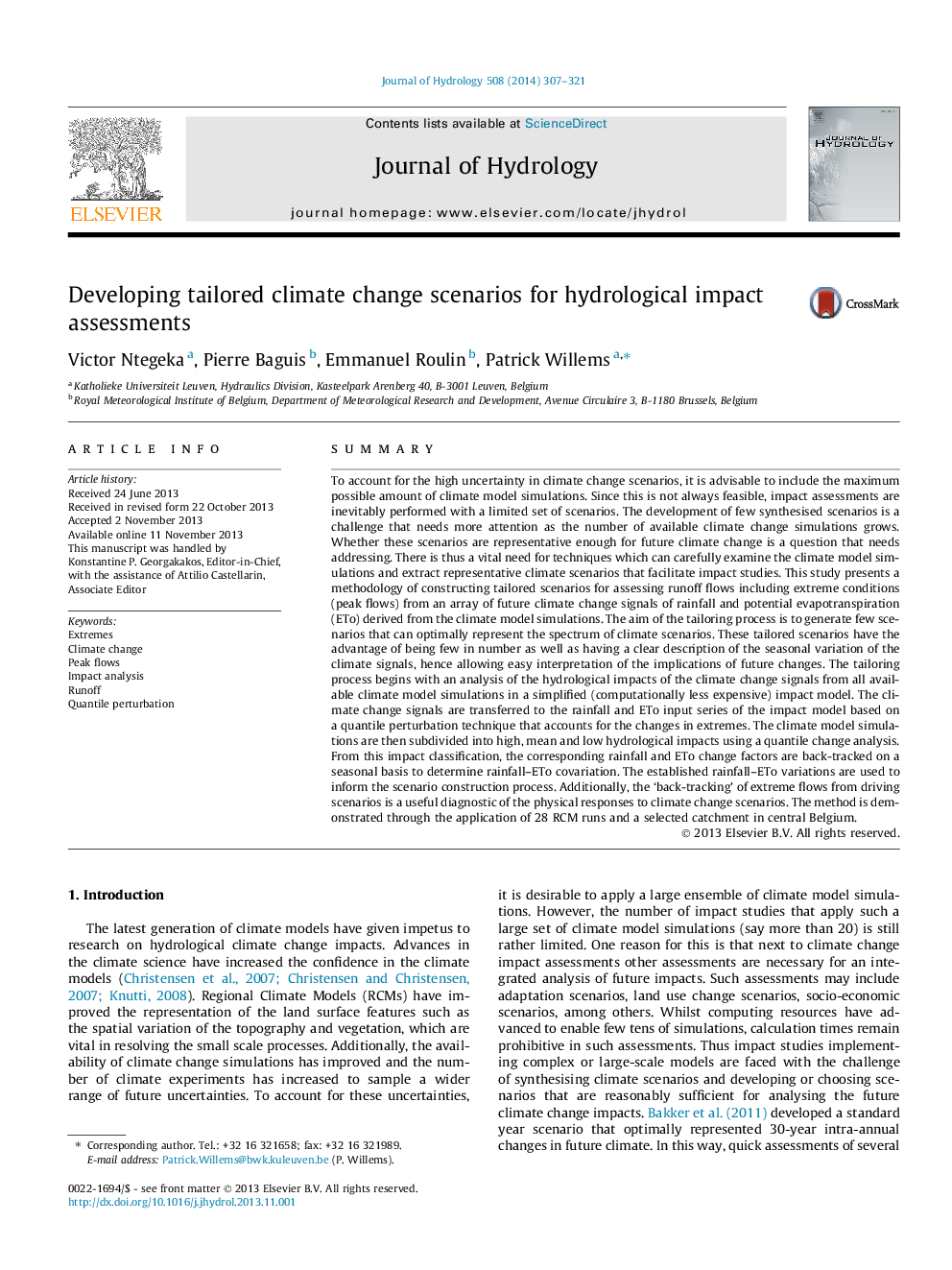| کد مقاله | کد نشریه | سال انتشار | مقاله انگلیسی | نسخه تمام متن |
|---|---|---|---|---|
| 4576057 | 1629940 | 2014 | 15 صفحه PDF | دانلود رایگان |
• Diagnosis of covariation of projections for evapotranspiration and rainfall.
• Statistically downscaled climate scenarios using frequency and intensity quantile perturbations.
• Construction of surrogate indicative scenarios to replicate range of extreme impacts.
SummaryTo account for the high uncertainty in climate change scenarios, it is advisable to include the maximum possible amount of climate model simulations. Since this is not always feasible, impact assessments are inevitably performed with a limited set of scenarios. The development of few synthesised scenarios is a challenge that needs more attention as the number of available climate change simulations grows. Whether these scenarios are representative enough for future climate change is a question that needs addressing. There is thus a vital need for techniques which can carefully examine the climate model simulations and extract representative climate scenarios that facilitate impact studies. This study presents a methodology of constructing tailored scenarios for assessing runoff flows including extreme conditions (peak flows) from an array of future climate change signals of rainfall and potential evapotranspiration (ETo) derived from the climate model simulations. The aim of the tailoring process is to generate few scenarios that can optimally represent the spectrum of climate scenarios. These tailored scenarios have the advantage of being few in number as well as having a clear description of the seasonal variation of the climate signals, hence allowing easy interpretation of the implications of future changes. The tailoring process begins with an analysis of the hydrological impacts of the climate change signals from all available climate model simulations in a simplified (computationally less expensive) impact model. The climate change signals are transferred to the rainfall and ETo input series of the impact model based on a quantile perturbation technique that accounts for the changes in extremes. The climate model simulations are then subdivided into high, mean and low hydrological impacts using a quantile change analysis. From this impact classification, the corresponding rainfall and ETo change factors are back-tracked on a seasonal basis to determine rainfall–ETo covariation. The established rainfall–ETo variations are used to inform the scenario construction process. Additionally, the ‘back-tracking’ of extreme flows from driving scenarios is a useful diagnostic of the physical responses to climate change scenarios. The method is demonstrated through the application of 28 RCM runs and a selected catchment in central Belgium.
Journal: Journal of Hydrology - Volume 508, 16 January 2014, Pages 307–321
